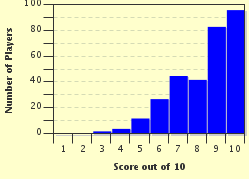Quiz Answer Key and Fun Facts
1. What color was given the deadly pandemic that killed millions in Europe between 1347 and 1353?
2. During the American Revolution, the British Army was known as what?
3. In Nazi Germany, the Sturmabteilung (SA) were known as what?
4. The ruling House of the Netherlands has long been known as what?
5. What colorful disease that has such symptoms as fever, nausea, chills, and pain, is caused by a mosquito bite? (Walter Reed knows.)
6. In the 19th century, there were six major occasions when prospectors rushed to an area to try to cash in on a mineral discovery. These "rushes" are known by what colorful name?
7. The White Revolution was a set of 19 reforms begun in 1963, including profit-sharing for workers, land reforms to transfer land from owners to share-croppers, and government financing of heavy industry. In which country did it take place? (Reza Pahlavi knows.)
8. In Italy, the Milizia Volontaria per la Sicurezza Nazionale (MVSN) was commonly known as what?
9. Beginning in 1917 in Russia, The Workers' and Peasants' Army (RKKA) was known by which colorful name?
10. Established in 1795, this Protestant Fraternal Order, based in Northern Ireland, conducts marches and demonstrations that are widely considered controversial and triggered violence. What is its colorful name?
Source: Author
lowtechmaster
This quiz was reviewed by FunTrivia editor
bloomsby before going online.
Any errors found in FunTrivia content are routinely corrected through our feedback system.


